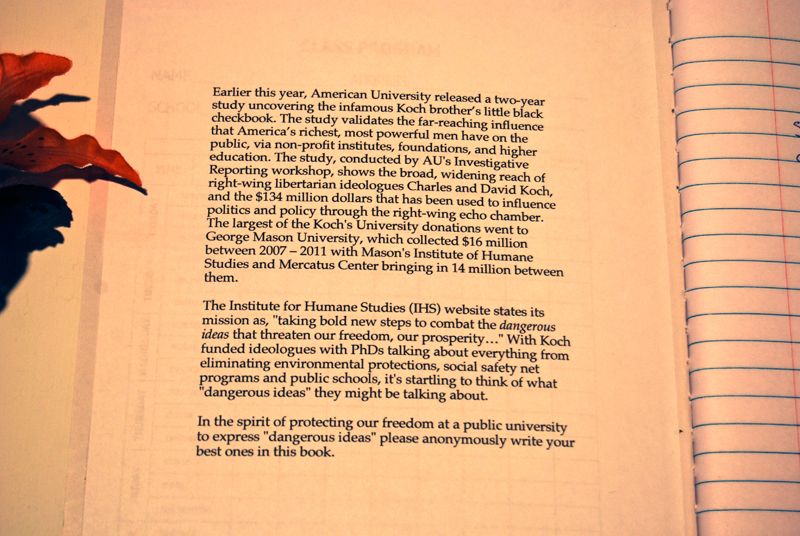
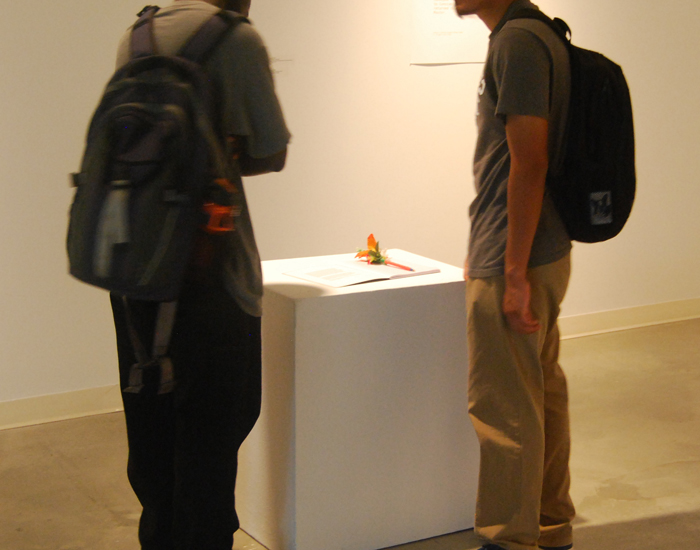

Book of Dangerous Ideas
2013
Matter/Antimatter: A Time Based Work
2013
Materials: plastics, red worms, shredded documents and coffee grounds.
A constructed ecosystem which facilitates the transformation of office waste (shredded office paper and coffee grounds) into living dirt. The resulting high grade fertilizer is then used to enrich the soil of a tabletop garden designed as a living salad bar for employees.
Documentation from installation at George Mason University School of Art Gallery and faculty staff lounge terrace.




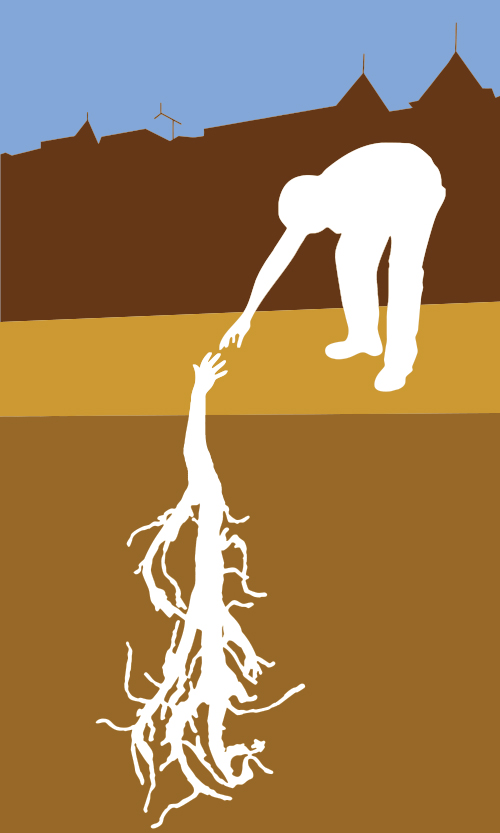
Companion Planting
2009
A graphic by Mark Cooley and Ryan Griffis for Urban Forest, DC.
This piece is an attempt to visualize the necessity of positioning community and human relations (culture) within America’s traditionally rather alienated view of “nature”. It seems that the most progressive urban forest and gardening projects these days begin by rethinking the assumption that “culture” and “nature” are mutually exclusive things as they begin to reincorporate natural elements into urban space and build community bonds around them.
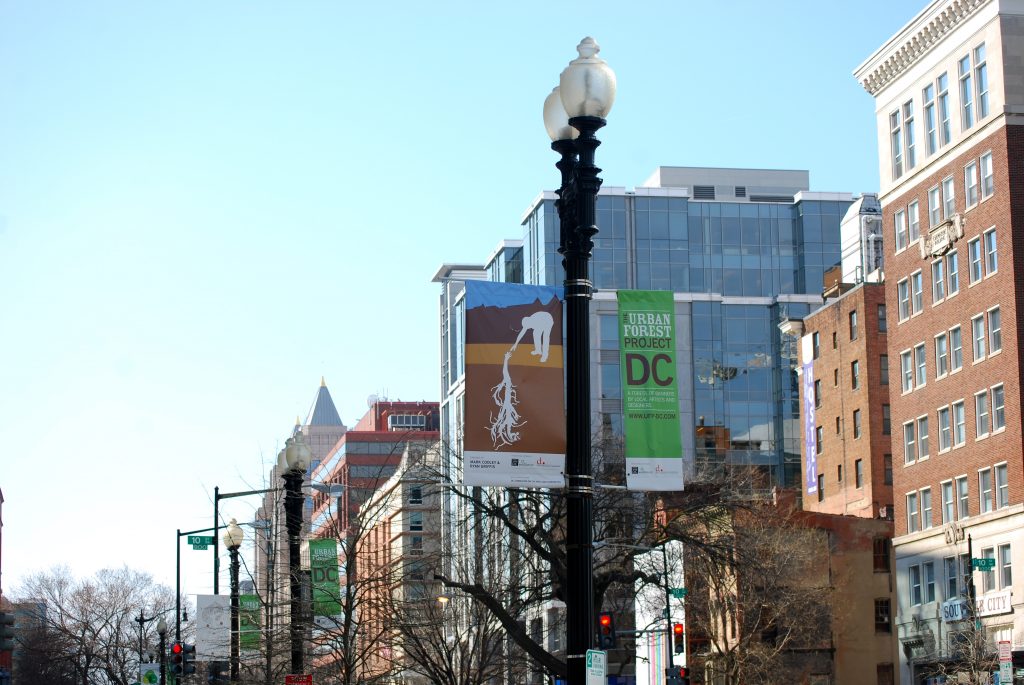
The Urban Forest Project is a unique public arts initiative of Worldstudio, which invited local artists and designers to employ the idea or form of the tree to make a powerful visual statement on street-banners that were then displayed in their community. The tree is a metaphor for sustainability and in that spirit, the banners at the close of each exhibition were recycled into totebags and auctioned off to raise money for a local environmental cause. The Urban Forest project was originally executed in New York’s Times Square in the fall of 2006 and has since travelled to several cities including: New York, San Francisco, Baltimore, Denver, Toledo, Washington, DC and Albuquerque.
“Agri-Art: The Death of Agri-Culture or Rise of Cooperatives”. Mark Cooley. From Green Acres: Artists Farming Fields, Greenhouses and Abandoned Lots

EcoCultures is an exhibition bringing together current cultural
productions at the intersections of the arts, sciences and the
practice of everyday life to explore the interdependence of our
social and biological systems.
Mason Hall Atrium Gallery | George Mason University, Fairfax VA
September 22 – October 6, 2011
Public Reception – September 22, 6:30 – 8:00pm
Curated by Mark Cooley
| Featuring the work of: | |
| Amy Balkin
The Futurefarmers The Yes Men Beatriz da Costa Temporary Travel Office
|
Beehive Design Collective
Jens Jarisch & Sharon Davis Kim Stringfellow Matthew Friday & Jeff Lovett Sarah Kanouse & Shiloh Krupar |
In Search of Zea Mays was created for the corn maze at Airlie Center in Warrenton VA, home of the Local Food Project (formerly directed by Pablo Elliot). A corn maze was created with the help of heirloom non-gmo corn seed, a tractor and gps system – and let’s not forget cooperative weather and lots of waiting. Within the maze, dead-end pathways invited maze-goers to rest and reflect on the history of industrial agriculture through a comfy strawbale seat and text / image investigations into the modern food system’s most prized plant – corn. The experience culminates in the “Cornference” room located in the center of the maze (& equipped with office furniture). The Cornference room hosted discussions among maze participants, meetings for members of The Local Food Project and at least one birthday bash. In Search of Zea Mays invited participants to explore our corn-based industrial food system by simultaneously superimposing the navigation of real space, data, and ideas in the familiar and freindly (if-not frustrating) form of the corn maze.
The Project was also displayed at the Green Festival in Washington DC as part of Airlie’s Local Food Project.
A Project by Mark Cooley in collaboration with farmer and local food advocate Pablo Elliot.
En plein air: No Man’s Land | 2011
Medium: Faux oil paintings – inkjet on stretched canvas
En plein air: No Man’s Land is a series of faux oil paintings made from desktop wallpapers of U.S. National Parks downloaded from the National Geographic website.
For the artist, the series represents an ongoing interest in authorship and appropriation, as well as the relationship between ecological catastrophe, the age of technological simulation and the fatalism of popular representations of nature that fail to envision how humans may possibly fit into a landscape without first destroying it.
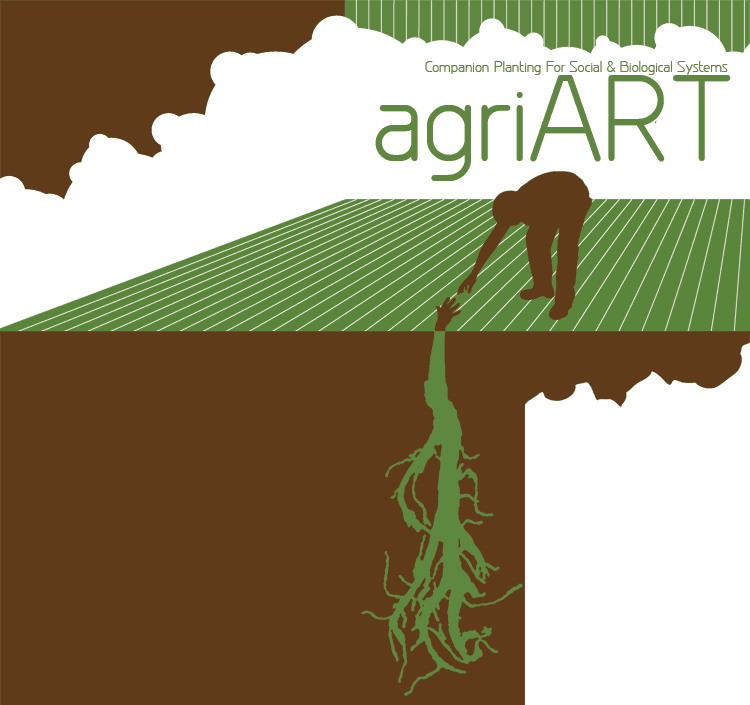
agriART is an exhibition brings together an array of art works that critically engage with cultures of food production and consumption. The exhibition features projects that represent where we are and what we can do to (re)create sustainable relationships with our sources of nourishment and the communities in which we live.
April 21 – May 15, 2009
Fine Arts Gallery. George Mason University
Public Reception – April 21, 5:00 – 7:00
Featuring: Fritz Haeg, Beehive Design Collective, Nance Klehm, Ted Purves & Susanne Cockrell, Critical Art Ensemble & Beatriz Da Costa & Claire Pentecost, Center for Urban Pedagogy with Amanda Matles, Deena Capparelli & Moisture, Lisa Tucker, Philip H. Howard, Amy Franceschini
With essays by: Claire Pentecost & Ron Graziani
Curated by: Mark Cooley & Ryan Griffis
agriART. Mark Cooley, Ryan Griffis. Media-N

The Field museum of Art
2007
This museum, its exhibitions, the artists, the art are all fictions – as it is with all museums, exhibitions, artists and art. This particular fiction is constructed as a sort of museum mash-up wherein a Fine Art Museum is constructed on the bones of a decayed Natural History Museum site – specifically, the Chicago Field Museum website was used as a template.
The Field Museum of Art site provides a stage for performing romantic and modernist attitudes toward this concept we call nature and for tracing how this concept – nature – and the living things and planetary systems it’s tied to, are changing in response to media and communications technologies. Of particular interest is the relationship between hyperreality and species extinction – investigating that relationship and marking out the real differences between a pulsing LED and a pulsing vein are primary concerns of The Field Museum of Art.